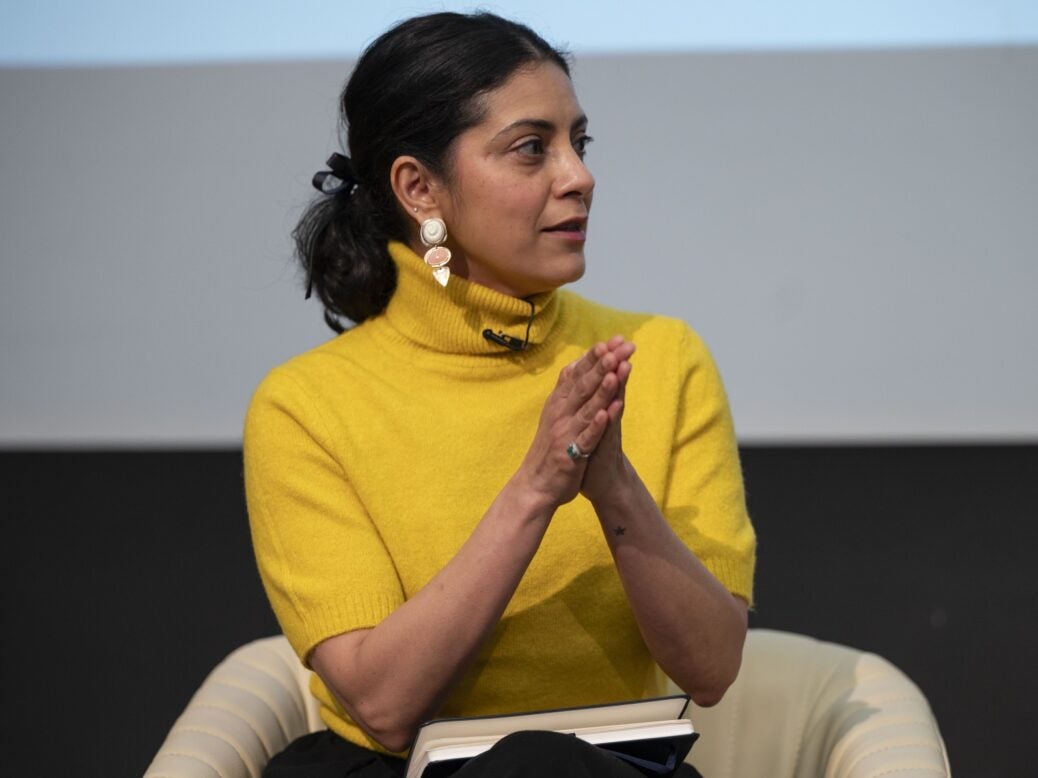
The acting director of the Reuters Institute for the Study of Journalism has warned that news publishers “have lost our way, as an industry, with our audience”.
Mitali Mukherjee told the Society of Editors Media Freedom conference last week that a loss of trust in the news industry was connected to news avoidance and a lack of engagement from young people.
But other industry figures struck a more hopeful tone, describing how they were trying to win back audience trust by emphasising the differences between their work and synthetic content produced using AI.
[Read more from the conference: Southport knife attack misinformation due to police PR secrecy say crime journalists, Mirror editor says newsroom ‘coming along on journey’ with page-view targets, Showbiz editors say newsroom culture will change post Millie Bobby Brown ‘bullying’ video]
‘The news misses its audiences, but the audience doesn’t miss the news’
Mukherjee, who has been acting director since Rasmus Kleis Nielsen stepped down from the leading media research organisation at the end of September, told the conference: “We can go on and on about the value of AI and telling our stories better and more impactfully.
“But the fundamental problem here is: the news, or the news industry, misses its audiences, but the audience doesn’t miss the news. I’m sorry for the tough love.”
She said news avoiders now make up “a chunky bit” of between 20-30% of the public, with those most likely to tune out younger people and people from economically disadvantaged communities. She added they “are most often people who do not see themselves represented in the news, and when they do, they see themselves represented in an extremely negative light”.
However Mukherjee highlighted as a positive that “when we asked audiences a bunch of questions around what they saw as trust, there’s actually a lot of overlap between what journalists feel should be the parameters and what audiences do”.
Both audiences and journalists valued fairness in news, she said, as well as transparency – however “transparency seems to mean different things” for the public.
“For journalism it is process – let’s show you what we’re doing, let’s lift the hood and reveal this project to you.
“For audiences, it is motive: who is the business owner behind this news organisation? What is the financial motive for this investigative story?”
With regard to the kinds of stories that create the most trust, Mukherjee gave a specific example from the institute’s research on climate journalism, saying: “If you were to look at the kind of climate stories that resonate the most… it’s not the investigative pieces. It’s often not the extreme weather events.
“It’s the small local stories. It’s about how a bunch of young people, or an entire community, got together and basically saved a local park, or built the biodiversity back. It’s giving people the impetus and the affirmation that they can take action…
“I’m not trying to tell anyone to do their job, far from it. I’m sure everyone knows very keenly the challenges and the opportunities. But I think that’s one space to gain trust.”
Mukherjee said the institute had seen “Facebook is making a return” as a platform for news – something noted by other publishers at the conference – and that AI was “beginning to emerge” as a thing younger audiences were experimenting with.
The acting director also cautioned news publishers over departing X, arguing: “trends are changing, and I think it’s important, as a news organisation, to be open to that and just to communicate what’s happening with audiences…
“The most important thing to do when you’re doing quality journalism is go out and talk to more people, not the same people.”
‘Personality’ a way of connecting with audience at The Sun and Facebook growing again as referral source
Speaking at the same session Will Payne, The Sun’s director of digital, said the newspaper’s approach to trust and audience connection had been to emphasise “the personalities behind the content we’re producing”, which he said gives them “a USP against mass-produced, AI-generated content”.
Often The Sun would do this, he said, by putting journalists at the centre of a story, either through opinion writing or by centring the publisher’s expanding video output on a particular reporter.
Payne said: “Traditionally, from a tabloid perspective, you might be discouraged from injecting some personal observations. But now we actively encourage it.”
The brand was also trying to write content “for audiences” rather than “for platforms”, he said. In the mass traffic era “it was very, very easy to tailor your content specifically for those platforms. And sometimes you could lose sight of who you’re writing for.
“When people said: ‘What’s a Sun reader?’ – it could have been anyone. We could reach anyone. Which is a very, very powerful thing on one hand, in terms of scale but you could argue it maybe devalues your focus on the core audience.”
Despite Facebook’s well-publicised break from the news, Payne said, “we have recently seen a little bit of a resurgence” since Meta chief executive Mark Zuckerberg’s recent comments about making changes on the platform.
Debbie Ramsay, the editor of 5 News, said the ITN brand had been “growing enormously” on Facebook, although it was starting from a smaller audience. She commented that clips doing well there tended to be lighter stories or have an entertainment focus, as well as “anything with XL Bullies”.
Asked how 5 News had been trying to deepen its connection with audiences Ramsay said the broadcaster had been holding large audience panels via Zoom.
She said they had been useful, but “it’s quite painful, they don’t hold back”, with respondents saying for example “that our studio is cold and clinical and looks like a dentist’s room”.
Email pged@pressgazette.co.uk to point out mistakes, provide story tips or send in a letter for publication on our "Letters Page" blog

